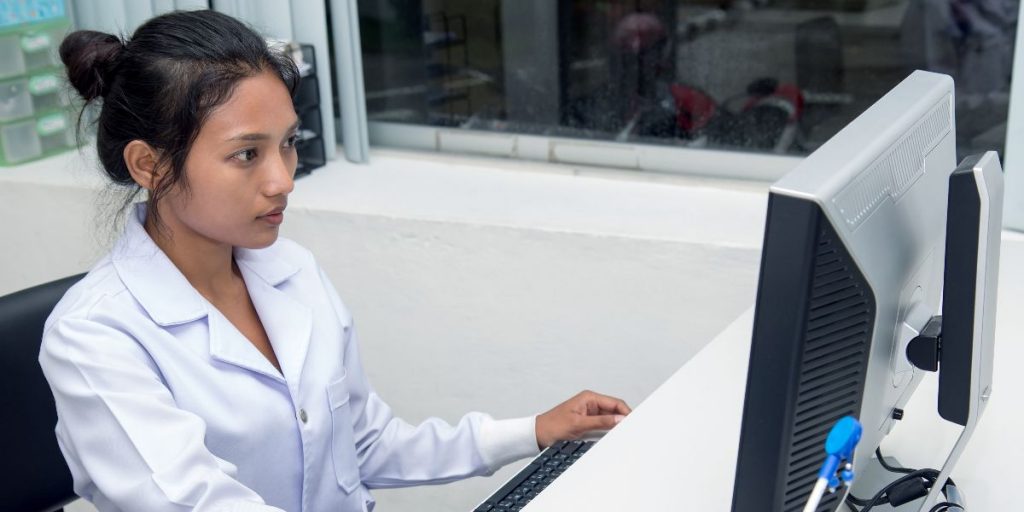AWS Public Sector Blog
Tag: research
A generalized approach to benchmarking genomics workloads in the cloud: Running the BWA read aligner on Graviton2
The AWS Cloud gives genomics researchers access to a wide variety of instance types and chip architectures and this elasticity allows us to rethink genomics workflows when running workloads in the cloud. Given the increased performance of the Graviton2 instances, we wanted to explore if they can be used for cost-effective and performant genomics workloads. Read on to learn about our generalized approach for determining the most effective instance type for running genomics workloads in the cloud.
Sharing MATLAB applications on AWS using the MATLAB Web App Server
If you are a researcher or scientist, you may be familiar with MATLAB, a computational analysis tool produced by Mathworks. And if you work in higher education, you may work with individuals and groups outside of your organization for data collection or the analysis of that data. Learn how to extend the reach of MATLAB applications on AWS by using the MATLAB Web App Server.
European research and education community can now access discounted cloud services faster through new agreement
GÉANT, one of the world’s largest research and education networks, is making it simpler to adopt cloud services through a new procurement framework, Open Cloud for Research Environments (OCRE Cloud Framework). GÉANT selected AWS Partners Jisc and Rackspace Technology to join the OCRE Cloud Framework.
An introduction to AWS for research IT: Getting started in the cloud
The cloud can help researchers process complex workloads, store and analyze enormous amounts of data, collaborate globally, and accelerate research and innovation. For research IT, Amazon Web Services (AWS) can help build scalable, cost-effective, and flexible environments while still maintaining the governance and guardrails for security and compliance. Following best practices, AWS allows for centralized management of resources, improved security and compliance of research workloads, and can save costs and accelerate innovation. What are some common questions from research IT customers?
Mysteries of the universe: Training neural networks to estimate parameters of synthetic black hole images
Before the Event Horizon Telescope project released the first-ever picture of a black hole in 2019, nobody had ever seen one. Black holes are a region of space with a gravitational pull so strong that nothing—not even light—can escape them. The cloud is helping accelerate research into black holes.
A new key to unlocking drug discovery
Be it aspirin for headache, or statin for cholesterol, or amoxicillin as an antibiotic, there are small molecules that we refer to as drugs that can offer therapeutic remedy. Given the range of possible molecule to protein combinations, finding the right small molecule that is able to bind strongly to a certain target site and inhibit its function is a time-intensive and challenging feat. Enter VirtualFlow, a new open-source software that performs screens, essentially matchmaking between molecules and proteins. Harvard Medical School researchers developed the VirtualFlow platform that tests compounds through computer simulations. Using AWS and an AWS Cloud Credit for Research grant, the researchers demonstrated that VirtualFlow is able to run on the cloud.
Simplifying access to cloud resources for researchers: CloudBank
To better support the growing use of cloud computing resources with increasing data- and compute-intensive research and education workloads, the National Science Foundation’s (NSF) Directorate for Computer and Information Science and Engineering (CISE) announced the Cloud Access solicitation in September 2018. The NSF, through its competitive merit review process, selected CloudBank. Researchers that use CloudBank gain access to advanced hardware resources such as CPUs, GPUs, FPGAs, ASICs, and quantum processing units (QPUs). In addition, CloudBank offers proposal assistance, facilitated cloud access and account management, monitoring and resource usage optimization, and eliminates university overhead/indirect costs, and provides curated training materials, classroom, and help desk support.
Announcing Service Workbench on AWS: A fast and simple solution to create a collaborative research environment
Today, Amazon Web Services (AWS) announced Service Workbench on AWS, a web portal for researchers to deploy domain-specific data and tools on secure IT environments in minutes not months. Customers can accelerate research while promoting repeatability, multi-site collaboration, and cost transparency in the research process. Tailored for researchers, Service Workbench helps quickly and securely stand up research environments for their work, allowing them to focus on the research not the technology.
Crowdsourcing a cure for COVID-19: How the cloud and Folding@home are accelerating research and drug discovery
Today more than 200,000 volunteers around the world are helping accelerate research toward COVID-19 therapies—by walking away from their computers. That’s because of a concept called distributed computing, which allows anyone with a home computer, laptop, or virtual machine to contribute computing power to a common cause. This month, nonprofit Folding@home has started sharing one of the world’s largest public protein simulation databases as an AWS Open Data Set so that researchers around the world can easily access this data to speed up the search for therapies for COVID-19.
Where mission outcomes and technology come together for impact: IMAGINE: Nonprofit Online recap
At the fifth annual AWS IMAGINE Nonprofit event—the first online—nonprofits from around the world shared stories of how technology came together in support of their mission to impact the communities they serve. The annual event brings together nonprofit leaders, technologists, and innovators to discuss how technology can help drive a positive impact for both people and the planet. Nonprofit speakers shared their journeys to solve for big challenges and how they’ve achieved their desired outcomes. Read on for more on what you missed.









